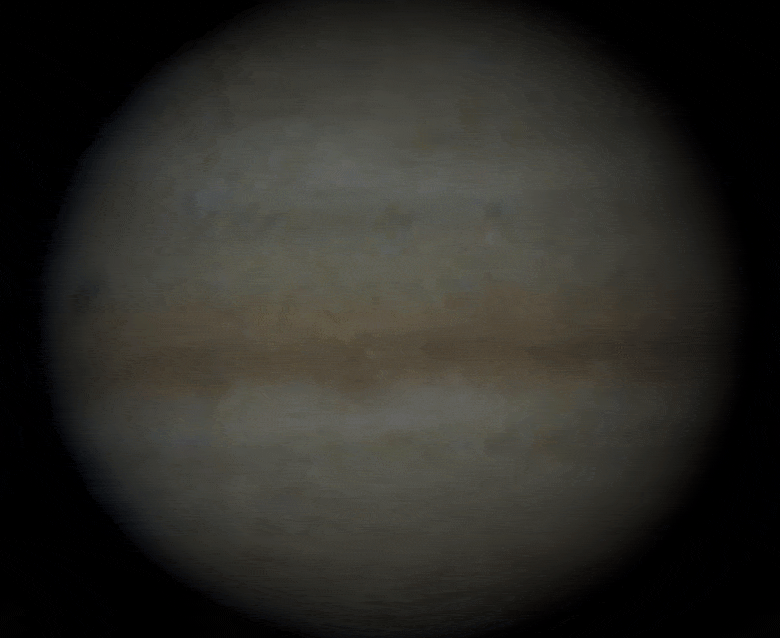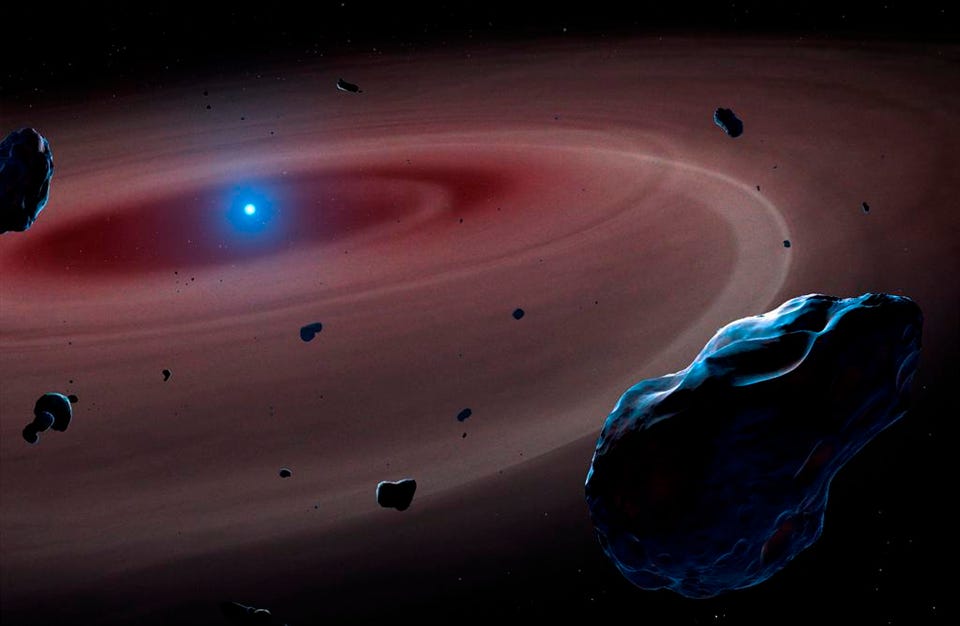A giant solar flare is inevitable, and humanity is completely unprepared
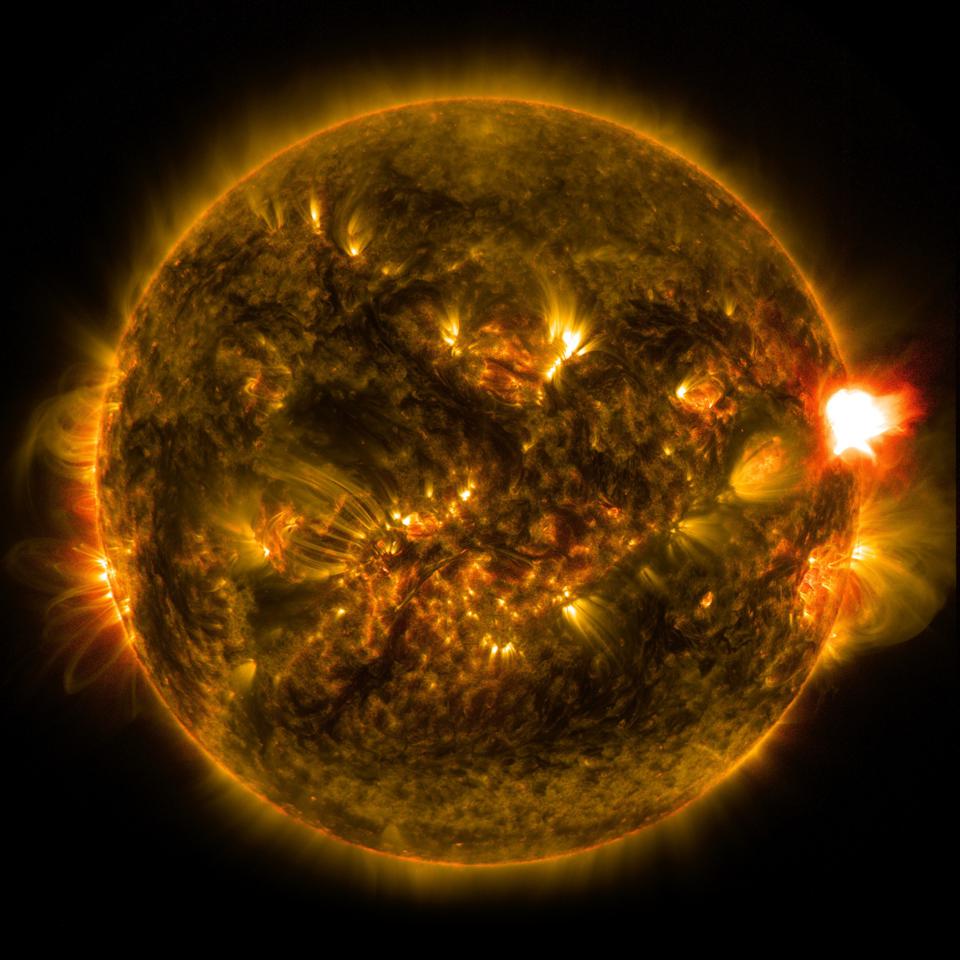
- The sun emits all sorts of space weather in random directions, and every once in a while Earth is right in its crosshairs.
- When a coronal mass ejection’s magnetic field is anti-aligned with Earth’s, it can induce a very dangerous geomagnetic storm.
- This could lead to a multitrillion dollar disaster if we’re unprepared — and we’ve never been in more danger.
From the 1600s through the mid-1800s, solar astronomy was a very simple science. If you wanted to study the sun, you simply looked at the light from it. You could pass that light through a prism, breaking it up into its component wavelengths: from ultraviolet through the various colors of the visible light spectrum all the way into the infrared. You could view the sun’s disk directly, either by putting a solar filter over your telescope’s eyepiece or by creating a projected image of the sun, both of which will reveal any sunspots. Or you could view the sun’s corona during the most visually appealing spectacle that nature has to offer: a total solar eclipse. For over 250 years, that was it.
That changed dramatically in 1859, when solar astronomer Richard Carrington was tracking a particularly large, irregular sunspot. All of a sudden, a “white light flare” was observed, with unprecedented brightness and lasting about five minutes. Approximately 18 hours later, the largest geomagnetic storm in recorded history occurred on Earth. Aurorae were visible worldwide, including at the equator. Miners awoke in the middle of the night, thinking it was dawn. Newspapers could be read by the light of the aurora. And troublingly, telegraph systems began sparking and igniting fires, even though they were disconnected entirely.
This turned out to be the first-ever observation of what we now know as a solar flare: an example of space weather. If an event similar to 1859’s Carrington event occurred here on Earth today, it would result in a multitrillion dollar disaster. Here’s what we all should know about it.

(Credit: Daniil Khogoev/pxhere)
When we think about the sun, we normally think about two things: the internal source of its power, nuclear fusion in its core, and the radiation that it emits from its photosphere, warming and powering all sorts of biological and chemical processes on Earth and elsewhere in the solar system. These are two of the major processes involving our sun, to be sure, but there are others. In particular, if we take a close examination of the sun’s outermost layers, we find that there are loops, tendrils, and even streams of hot, ionized plasma: atoms that are so hot that their electrons were stripped away, leaving only bare atomic nuclei.
These wispy features result from the sun’s magnetic field, as these hot, charged particles follow the magnetic field lines between different regions on the sun. This is very different than Earth’s magnetic field. Whereas we are dominated by the magnetic field created in our planet’s metallic core, the sun’s field is generated just beneath the surface. This means that lines enter and exit the sun chaotically, with strong magnetic fields that loop back, split apart, and reconnect periodically. When these magnetic reconnection events occur, they can lead not only to rapid changes in the strength and direction of the field near the sun, but also the rapid acceleration of charged particles. This can lead to the emission of solar flares, as well as — if the sun’s corona gets involved — coronal mass ejections.
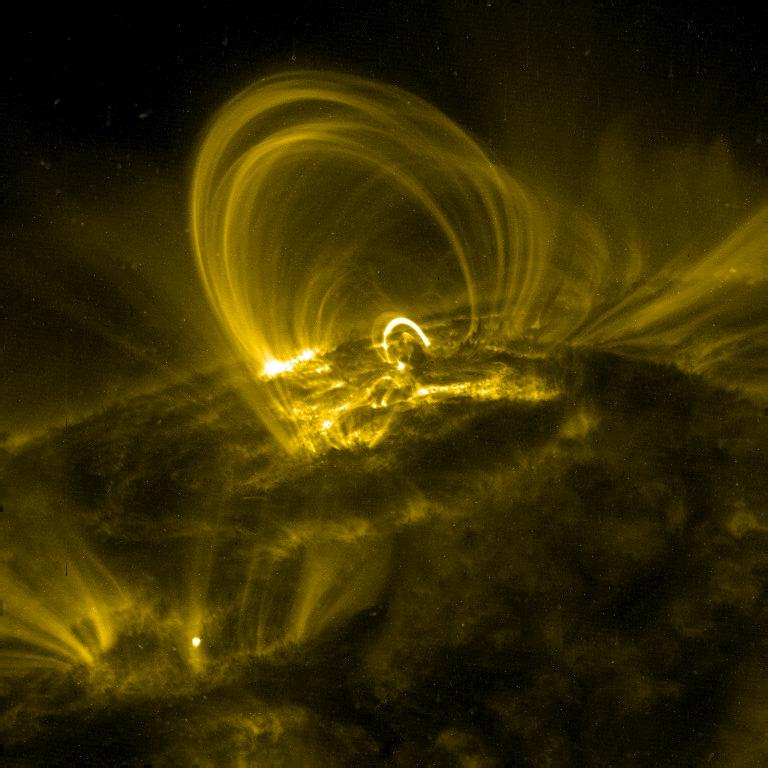
(Credit: NASA/TRACE)
What happens on the sun, unfortunately, doesn’t always stay on the sun, but freely propagates outward throughout the solar system. Solar flares and coronal mass ejections consist of fast-moving charged particles from the sun: largely protons and other atomic nuclei. Normally, the sun emits a constant stream of these particles, known as the solar wind. However, these space weather events — in the form of solar flares and coronal mass ejections — can not only greatly enhance the density of charged particles that get sent out from the sun, but their speed and energy as well.
Solar flares and coronal mass ejections, when they occur, often happen along the sun’s central and mid-latitudes, and only rarely around the polar areas. There seems to be no rhyme or reason to their directionality — they’re just as likely to occur in the direction of Earth as they are in any other direction. Most of the space weather events that occur in our solar system are benign, at least from our planet’s point of view. It’s only when an event comes directly for us that it poses a potential danger.
Given that we now have sun-monitoring satellites and observatories, they’re our first line of defense: to alert us when a space weather event is potentially threatening to us. That occurs when a flare points directly at us, or when a coronal mass ejection appears “annular,” meaning that we only see a spherical halo of an event that’s potentially directed right at us.
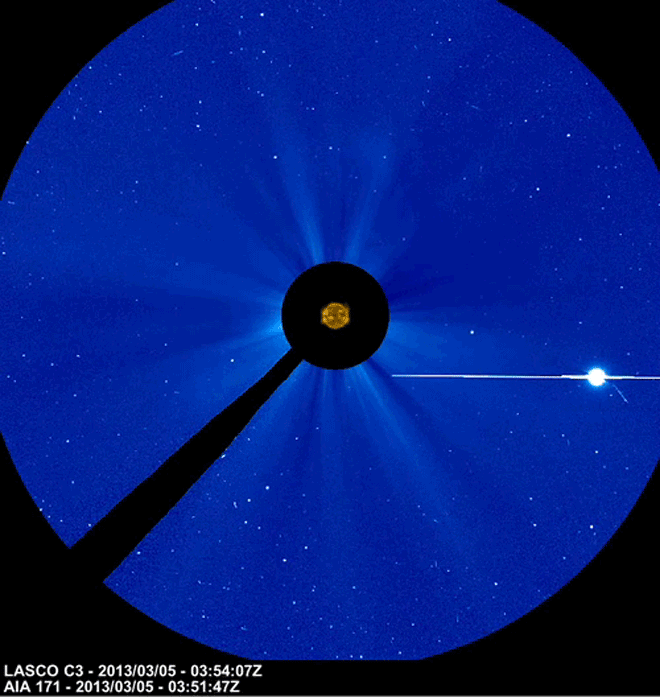
Whether from a solar flare or a coronal mass ejection, however, a slew of charged particles headed towards Earth doesn’t automatically mean disaster. In fact, we’re only in trouble if three things all occur at once:
- The space weather events that occur have to have the proper magnetic alignment with respect to our own planet to penetrate our magnetosphere. If the alignment is off, Earth’s magnetic field will harmlessly deflect the majority of particles away, leaving the remainder to do nothing more than create a mostly harmless auroral display.
- Typical solar flares occur only at the sun’s photosphere, but ones that interact with the solar corona — often connected by a solar prominence — can cause a coronal mass ejection. If a coronal mass ejection is directed right at Earth, and the particles are moving rapidly, that’s what puts Earth in the greatest amount of peril.
- There needs to be a large amount of electrical infrastructure in place, particularly large-area loops and coils of wire. Back in 1859, electricity was still relatively novel and rare; today, it’s a ubiquitous part of our global infrastructure. As our power grids become more interconnected and far-reaching, our infrastructure faces greater threat from these space weather events.
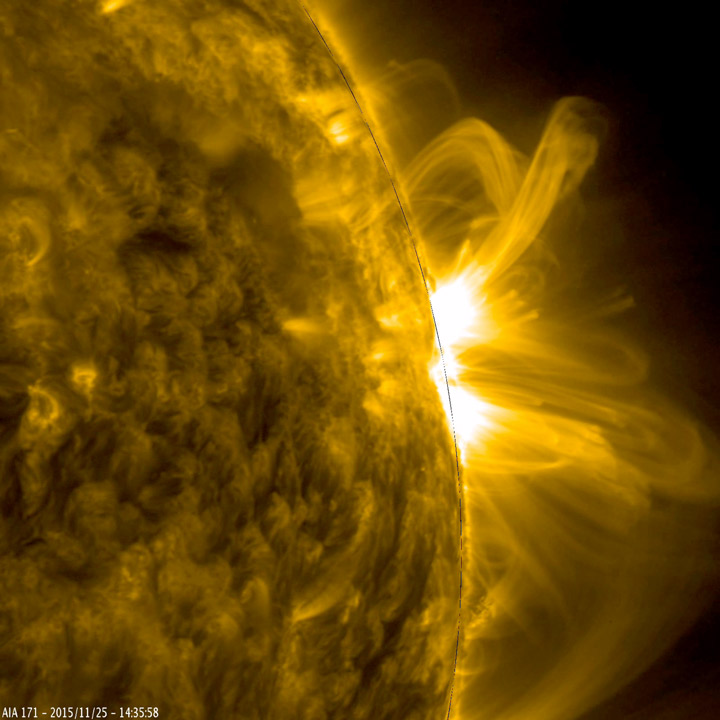
Credit: NASA/Solar Dynamics Observatory/GSFC
In other words, most of the space weather events that have occurred throughout history would have posed no danger to humans on our planet, as the only discernable effects they would have would be to cause a spectacular auroral display. But today, with the massive amounts of electricity-based infrastructure that now covers our planet, the danger is very, very real.
The concept is pretty easy to understand and it has been around since the first half of the 19th century: induced current. When we build an electric circuit, we typically include a voltage source: an outlet, a battery, or some other device that’s capable of causing electric charges to move through a current-carrying wire. That’s the most common way to create an electric current, but there’s another: by changing the magnetic field that’s present inside a loop or coil of wire.
When you run a current through a loop or coil of wire, you change the magnetic field inside of it. When you turn that current off, the field changes again: a changing current induces a magnetic field. Well, as shown by Michael Faraday all the way back in 1831, 190 years ago, the reverse is also true. If you change the magnetic field inside a loop or coil of wire — such as by moving a bar magnet into or out of the loop/coil itself — it will induce an electric current in the wire itself, meaning it will cause electric charge to flow even without a battery or some other voltage source.
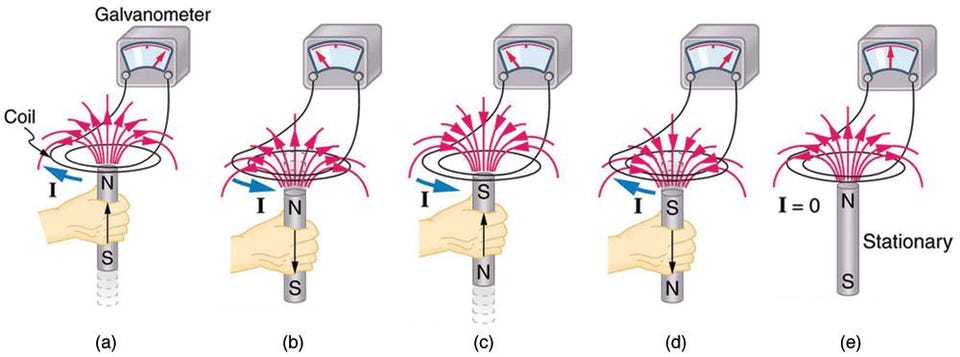
Credit: OpenStaxCollege, CCA-by-4.0
That’s what makes space weather so dangerous to us here on Earth: not that it poses a direct threat to humans, but that it can cause enormous amounts of electrical current to flow through the wires connecting our infrastructure. This can lead to:
- electrical shorts
- fires
- explosions
- blackouts and power outages
- a loss of communications infrastructure
- many other damages that will appear downstream
Consumer electronics aren’t a major problem; if you knew a solar storm was coming and you unplugged everything in your home, most of your devices would be safe. The major issue is with the infrastructure set up for large-scale production and transmission of power; there will be uncontrollable surges that will knock out power stations and substations and pump far too much current into cities and buildings. Not only would a big one — comparable to 1859’s Carrington event — be a multitrillion-dollar disaster, but it could also potentially kill thousands or even millions of people, depending on how long it took to restore heat and water to those most direly affected.

The first thing we need to invest in, if we’re actually serious about preventing the worst-case scenario for such an event, is early detection. While we can look at the sun remotely, gaining estimates for when flares and coronal mass ejections could be potentially hazardous to Earth, we’ve been relying on incomplete data. Only by measuring the magnetic fields of the charged particles traveling from the sun to Earth — and comparing them with the orientation of Earth’s magnetic field at that particular moment — can we know whether such an event would have a potentially catastrophic impact on our planet.
In past years, we’ve been reliant on the sun-observing satellites we’ve put up between the Earth and the sun: at the L1 Lagrange point, some 1,500,000 km away from Earth. Unfortunately, by the time the particles streaming from the sun get to L1, they’ve traveled 99% of the way from the sun to Earth, and will typically arrive between 15 and 45 minutes later. That’s far from ideal when it comes to predicting a geomagnetic storm, much less engaging in measured to mitigate one. But all of that is changing as the first of the next-generation solar observatories has recently come online: the National Science Foundation’s DKIST, or the Daniel K. Inouye Solar Telescope.

The Inouye telescope is extremely large, with a 4-meter diameter primary mirror. Of its five science instruments, four of them are spectro-polarimeters, designed and optimized for measuring the sun’s magnetic properties. In particular, it allows us to measure the magnetic field in all three of the sun’s observable layers: photosphere, chromosphere, and throughout the solar corona. Armed with this information, we can know with great confidence what the orientation of a coronal mass ejection’s magnetic field is from the moment it’s emitted, and can then easily determine what sort of danger that ejected material poses to Earth.
Instead of under an hour of lead time, we could have a warning of up to the full three to four days it typically takes ejected coronal material to travel to Earth. Even for a Carrington-like event, which traveled approximately five times as fast as typical coronal mass ejections, we’d still have ~17 hours of warning — far more than what we had prior to Inouye’s first unveiling in 2020. Because it functions as a solar-measuring magnetometer, the Inouye telescope, which is the very first of our next-generation solar observatories, gives us greater warning of a potential geomagnetic catastrophe than we’ve ever had.

Credit: NASA
It’s important that we neither exaggerate nor downplay the dangers we face. Under normal circumstances, the sun emits charged particles, and occasionally, magnetic events drive the release of flares and, more uncommonly, coronal mass ejections. Under most circumstances, these particle streams are low-energy and slow-moving, taking about three days to traverse the Earth-sun distance. Most of these events will miss the Earth, as they’re localized in space and the odds of striking our precise location are low. Even if they do hit the Earth, our planet’s magnetic field will funnel them away harmlessly, unless the magnetic fields are serendipitously (anti-)aligned.
But if everything lines up in precisely the wrong way — and that’s truly just a matter of time and random chance — the outcome could be disastrous. Although these particles cannot penetrate the atmosphere directly and harm biological organisms directly, they could do tremendous damage to our electrical and electronics-based infrastructure. Every power grid in the world could go down. If the damage is bad enough, it could all need repair or even replacement; damage in the U.S. alone could reach ~$2.6 trillion. Additionally, space-based infrastructure, like satellites, could be knocked offline, potentially leading to another disaster if low-Earth orbit gets too crowded: a cascade of collisions, rendered unavoidable if the systems responsible for collision-avoidance are knocked offline.
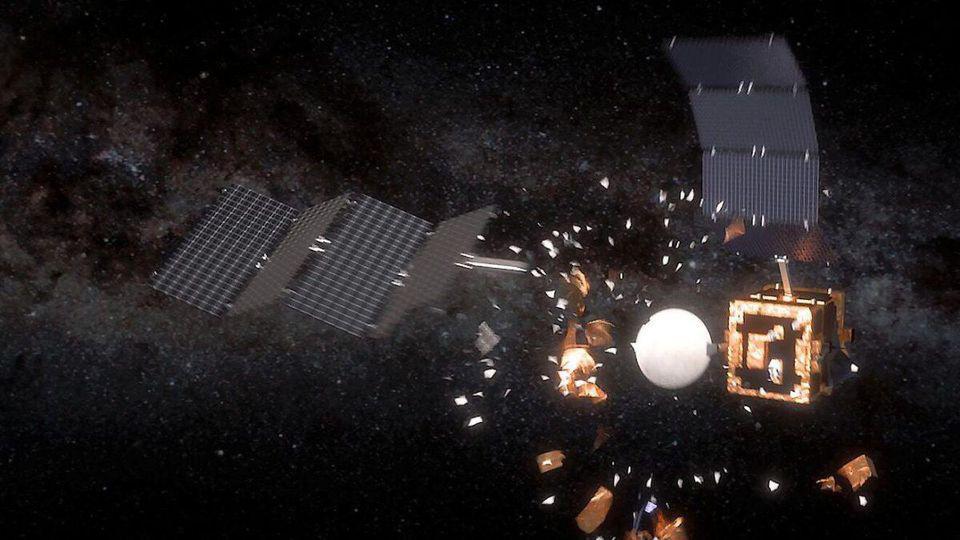
Credit: ESA/Space Debris Office
On June 23, 2012, the sun emitted a solar flare that was just as energetic as 1859’s Carrington event. It was the first time that had occurred since we’ve developed the tools capable of monitoring the sun to the necessary precision. The flare occurred in Earth’s orbital plane, but the particles missed us by the equivalent of nine days. Similar to the Carrington event, the particles traveled from the sun to the Earth in just 17 hours. If Earth had been in the way at the time, the global damage toll could have crested the $10 trillion mark: the first 14-figure natural disaster in history. It was only through luck that we averted catastrophe.
As far as mitigation strategies go, we’re only slightly better prepared today than we were nine years ago. We have insufficient grounding at most stations and substations to direct large induced currents into the ground instead of homes, businesses, and industrial buildings. We could order power companies to cut off the currents in their electrical grids — a gradual ramp-down requiring ~24 hours — which could reduce the risks and severities of fires, but that has never been attempted before. And we could even issue recommendations for how to cope in your own household, but no official recommendations presently exist.
Early detection is the first step, and we’re making great scientific strides on that front. However, until we’ve prepared our power grid, our energy distribution system, and citizens of the Earth to be ready for the inevitable, the “big one” will be paid for many times over, for years and even decades to come, because we failed to invest in the ounce of prevention we so sorely need.
